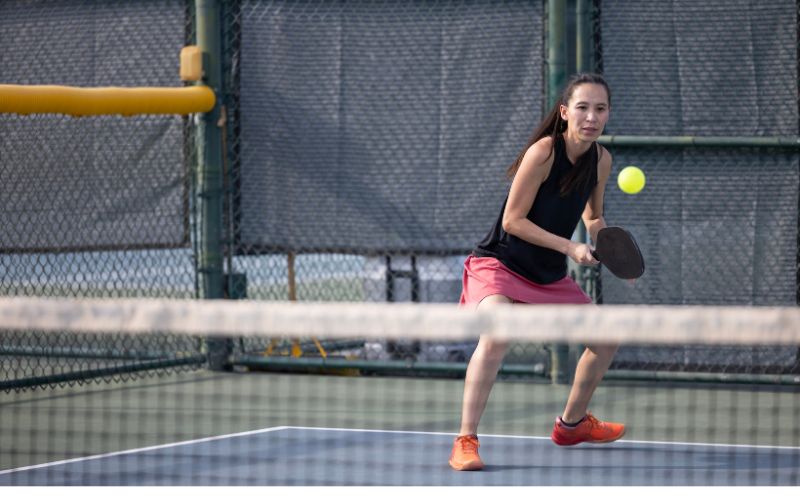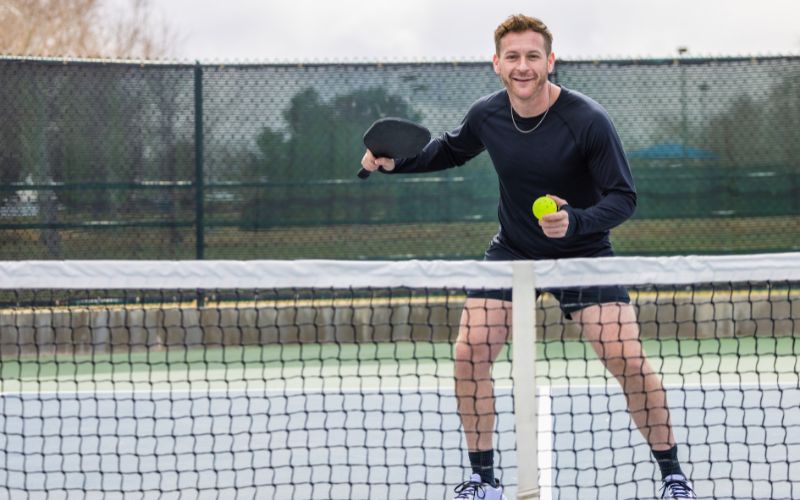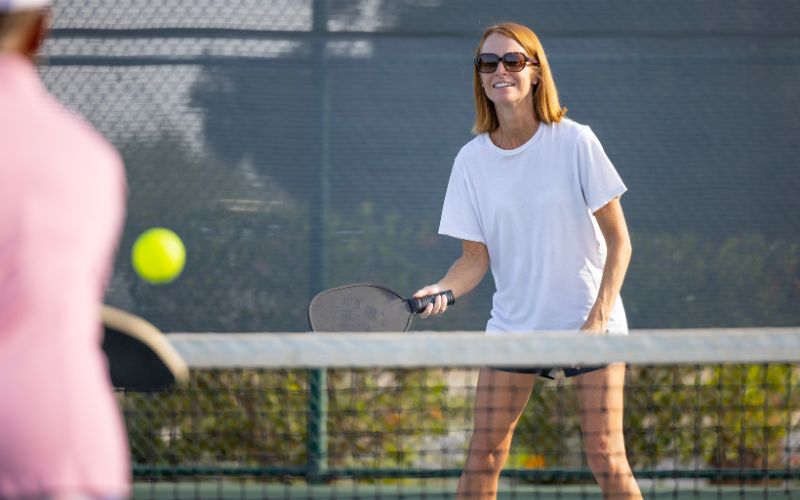Pickleball is a sport that has gained immense popularity over the years. While many are familiar with the doubles format, singles pickleball offers a unique challenge and requires a different set of strategies and rules. In this guide, we’ll delve deep into the rules for singles pickleball, helping you elevate your game.
Understanding the Basics of Pickleball
Before diving into the specifics of singles play, it’s essential to grasp the foundational rules of pickleball.
Equipment and Court Dimensions
- Paddle: Unlike tennis rackets, pickleball uses solid paddles, often made of lightweight composite materials.
- Ball: Perforated polymer balls, specific to either indoor or outdoor play.
- Court: Similar in size to a badminton court, measuring 20 x 44 feet, with specific zones like the non-volley zone.
Scoring System of Singles Pickleball Explained
In pickleball, whether it’s singles or doubles, the scoring system is unique and differs from many other racket sports. Here’s a breakdown of how scoring works in singles pickleball:
- Initiating the Serve: The game begins with one player serving from the right side of the court. The server must stand behind the baseline, ensuring their feet do not cross the non-volley zone line during the serve attempt.
- Earning Points: In singles pickleball, only the serving team (or in this case, the serving player) can score points. This is a rule that singles share with doubles pickleball. If the server wins the rally, they earn a point and then move to the opposite side of the court to serve again. If the server loses the rally, the serve transfers to the opponent.
- Serve Rotation: Unlike doubles pickleball, where there’s a sequence of serving between partners, singles pickleball has a straightforward rotation. After scoring a point, the server switches to the other side of the pickleball court to serve from the alternate box. This alternating pattern continues until the server commits a fault or loses a rally.
- Faults: A fault can occur due to various reasons, such as the ball landing out of bounds, the ball not clearing the net, or the server stepping on or over the non-volley zone line during their serve attempt.
- Winning the Game: A typical pickleball game is played to 11 points. However, to win, a player must lead by at least two points. So, if the score reaches 10-10, the game continues until one player has a two-point lead.
- Side Switching: In official tournament play, players switch sides of the court after one player scores 6 points in a game to 11. This ensures that no single player has a prolonged advantage due to external factors like sun or wind.
Diving into Singles Pickleball Rules
Singles pickleball, while sharing many rules with doubles, has its nuances.
Serving Rules
- The serve must be made diagonally, starting from the right-hand service square.
- The ball must be struck below the waist level, and the server must keep both feet behind the baseline during the serve.
Faults in Singles Play
A fault can occur due to various reasons:
- Hitting the ball out of bounds.
- Not clearing the net.
- Stepping into the non-volley zone and volleying the ball.
Non-Volley Zone Rules
The non-volley zone, often called “the kitchen,” is a 7-foot area on both sides of the net. Players cannot volley within this zone, ensuring longer rallies and strategic play.
Strategies for Singles Pickleball
- Strategies for Singles Pickleball
- Singles pickleball is a dynamic and fast-paced game that requires a different set of strategies compared to its counterpart, the doubles game. While the basic principles of pickleball remain the same, the tactics and gameplay in singles can vary significantly. Here are some strategies to consider:
- The Importance of the First Serve: In singles pickleball, the first serve is crucial. Unlike in doubles play, where there’s a sequence of serving between partners, in singles, you get only one serve attempt. A strong and strategic serve can set the tone for the rally. Aim to serve deep into your opponent’s service court, pushing them back and giving you the advantage as you approach the net.
- Adapting from Doubles to Singles: Players who transition from a doubles game to singles often need to adjust their gameplay. In singles and doubles, court coverage is different. In singles, you’re responsible for the entire court, so stamina, speed, and agility become paramount. It’s essential to practice lateral movements and improve your court coverage.
- Aggressive Net Play: Unlike doubles play, where both players often position themselves near the net, in singles, aggressive net play can give you a significant advantage. By controlling the net, you can easily put away volleys and force your opponent into defensive positions.
- Understanding Pickleball Singles Rules: Familiarity with pickleball singles rules is essential. For instance, remember that you only get one serve attempt, and the serve must land in the opponent’s service court diagonally opposite from where you’re serving. Being well-versed in the rules can prevent unnecessary faults and give you an edge over your opponent.
- Depth Over Power: While powerful shots can be effective, in singles, depth is more crucial. Deep shots can push your opponent back, making it challenging for them to return aggressively. This strategy can give you the upper hand, allowing you to control the rally and look for opportunities to finish the point.
- Consistency is Key: Unlike in doubles, where you can rely on a partner to cover certain areas of the court, in singles, consistency in your shots is vital. Reducing unforced errors and keeping the ball in play can exert pressure on your opponent, leading them to make mistakes.
- Adapting to Your Opponent: Every player has strengths and weaknesses. Observing and adapting to your opponent’s playing style can be a game-changer. If they struggle with backhand shots, for instance, consistently targeting that area can give you an advantage.
Pickleball, a sport that beautifully merges elements from tennis, badminton, and table tennis, has seen a surge in its fan base, especially in the doubles format. However, singles pickleball, with its unique set of challenges and rules, offers a fresh perspective to the game. Mastering singles pickleball requires not just an understanding of the foundational rules but also the adoption of specific strategies tailored for one-on-one play.
From the intricacies of serving to the nuances of the non-volley zone, singles pickleball is a test of agility, strategy, and skill. Whether you’re a seasoned player transitioning from doubles or a newbie starting with singles, this comprehensive guide aims to equip you with the knowledge to elevate your game and truly master the rules of singles pickleball.
Frequently Asked Questions
What is the main difference between singles and doubles pickleball in terms of rules?
While many rules are shared between singles and doubles, the primary difference lies in serving and court coverage. In singles, players have only one serve attempt and are responsible for covering the entire court.
How does the scoring system in singles pickleball work?
Only the serving player can score points. If the server wins the rally, they earn a point and switch sides to serve from the alternate box. If they lose the rally, the serve transfers to the opponent.
What is the significance of the non-volley zone in pickleball?
The non-volley zone, also known as “the kitchen,” is a 7-foot area on both sides of the net. Players cannot volley (hit the ball before it bounces) within this zone, promoting longer rallies and strategic gameplay.
Why is the first serve so crucial in singles pickleball?
The first serve sets the tone for the rally. A strategic serve can push the opponent back, giving the server an advantage as they approach the net. In singles, players get only one serve attempt, making it even more vital.
Can players switch sides during a singles pickleball match?
Yes, in official tournament play, players switch sides of the court after one player scores 6 points in a game played to 11. This ensures no player has a prolonged advantage due to factors like sun or wind.






